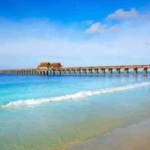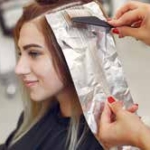Sheikhs and Shisha, Skyscrapers and Sand: Discovering Dubai

Lisa is an Independent Luxury Travel Advisor affiliated with Preferred Travel and Company
Text

Lisa Spiller
The allure of Dubai, for me, has always been the futuristic architecture, over the top attractions and developments, Arabian culture, desert adventures, and the glamourous intrigue of a place so foreign. Over six days in November, I discovered Dubai is ALL THAT and more!
With the added insights and appreciation that I gained from my recent travel experience, I am now a super fan.

Lisa Spiller, The Jumeirah Grand Mosque
Having never traveled to Arabia before, I wanted to alleviate any stress upon arrival, so I arranged a private VIP meet and greet service at the airport. We were met at our gate by a uniformed English-speaking guide through immigration and baggage claim to our awaiting car within minutes. Checking into the SLS Dubai, we were eager to experience the Dubai skyline and nightlife. The hotel lobby on the 71st floor offered Art Deco glam, and our hotel room was a sprawling contemporary two-story loft with breathtaking views of Burj Khalifa, the world’s tallest building.
After a quick change of clothes, we beamed up to restaurant Fi’lia, for al fresco Mediterranean fare and pushed through our jet lag to check out the widely known SLS Rooftop Pool Bar. As we stepped off the elevator onto the al fresco pool bar, we found a scene alive with sizzle and sparkle! A hipster DJ was spinning live Arabian pop music in front of a shimmering panoramic backdrop of the city skyline.
A vibrant, eclectic mix of chic international urbanites were sipping Moët & Chandon by starlight laughing in foreign languages while locals huddled over shisha pipes. Shisha is flavored tobacco smoked through a hookah pipe and is part of the fabric of Arabic culture. We relished the vibe and marveled at our exotic adventure underway.
From the SLS in the city center, we moved to our beach accommodations, the iconic Burj Al Arab. To arrive at the Burj Al Arab is like stepping into a movie set. The “hotel designed like a ship sailing into harbor” is reached by a guarded bridge which only guests of the hotel are allowed to cross.
Tall men from Kenya dressed in flowing white thobes and dark sunglasses served as elegant doormen, orchestrating the constant nirvanic flow of humanity through the front doors. The interior décor was unmistakably “Arabian Sheikh,” every design element over the top.
Each of the 199 hotel rooms is as big as a duplex home in the sky featuring rich jewel tones, gold leaf accents, imported marble, custom tilework and personally attended to by a professional butler.
With 20 restaurants, multiple beach clubs, a traditional souk, a waterpark, buggies (golf carts) and abras (small electric wooden boats) to transport guests, this is a destination resort.
We hopped on a buggy to the abra station, cruised the canals and shopped in the Souk Madinat Jumeirah for local treasures including cashmere pashminas, silk, pottery, paper mâché art, gold, spices, blown glass perfume bottles and mosaic lanterns. In the afternoon, we jumped in the warm, rolling waves of the Persian Gulf, lazed on a beach bed under cloudless skies, hydrated with pina coladas and margaritas and eavesdropped on the international jet set vacationing alongside us.
Sheikh Mohammed bin Rashid Al Maktoum, the absolute ruler of Dubai and the prime minister of the United Arab Emirates, is thinspiration and vision behind The Burj Al Arab, The Palm and many of the award-winning developments and attractions in the city. His likeness is omnipresent in photos, artist renderings and quotes on buildings and in hotel lobbies. He is beloved by his people for his generosity and forward-thinking mentality and is known to provide a palatial home for Emiratis upon their wedding day and employ women in his government at a ratio of 60%.
Among the highlights of our adventure was experiencing the national heritage sports born of the ancient Bedouin tribes and perpetuated by the local Emirati people: camel races and falconry. Camels are owned by sheikhs, trained in the desert by Pakistani and Indian immigrants and raced for big money at various Emirate camel racing clubs.
I was thrilled to secure a local guide for the first race of the season at the Dubai Camel Racing Club and Al Marmoom Racing Track.
We were mesmerized by hundreds of camels and trainers preparing for the morning races. An interesting twist: The camels are fitted with robot jockeys and operated remotely from 4 x 4 vehicles on an adjacent track. Race after race, we watched dozens of camels adorned with colorful Mahawi’s (Arabic camel saddles) carrying the doll-like robots line up for the 8 km races, sprint out of the gate and after 8km, limp and foam across the sandy finish line.
For an authentic off the beaten tourist track experience, this can’t be beat! Camel farms and markets are part of the fabric of desert culture. We saw hundreds of camels being walked by immigrant farmers over miles of golden sand near the Al Marmoom Desert Conservation Reserve. The Camelicious factory, located in the same area, processes, packages and sells chocolate camel milk and camel meat, both popular with the locals, in grocery stores and camel markets.
To be continued in our March issue!
Contact Lisa: Lisa@PreferredNaples.com 239-261-1177




Leave a Reply
Want to join the discussion?Feel free to contribute!